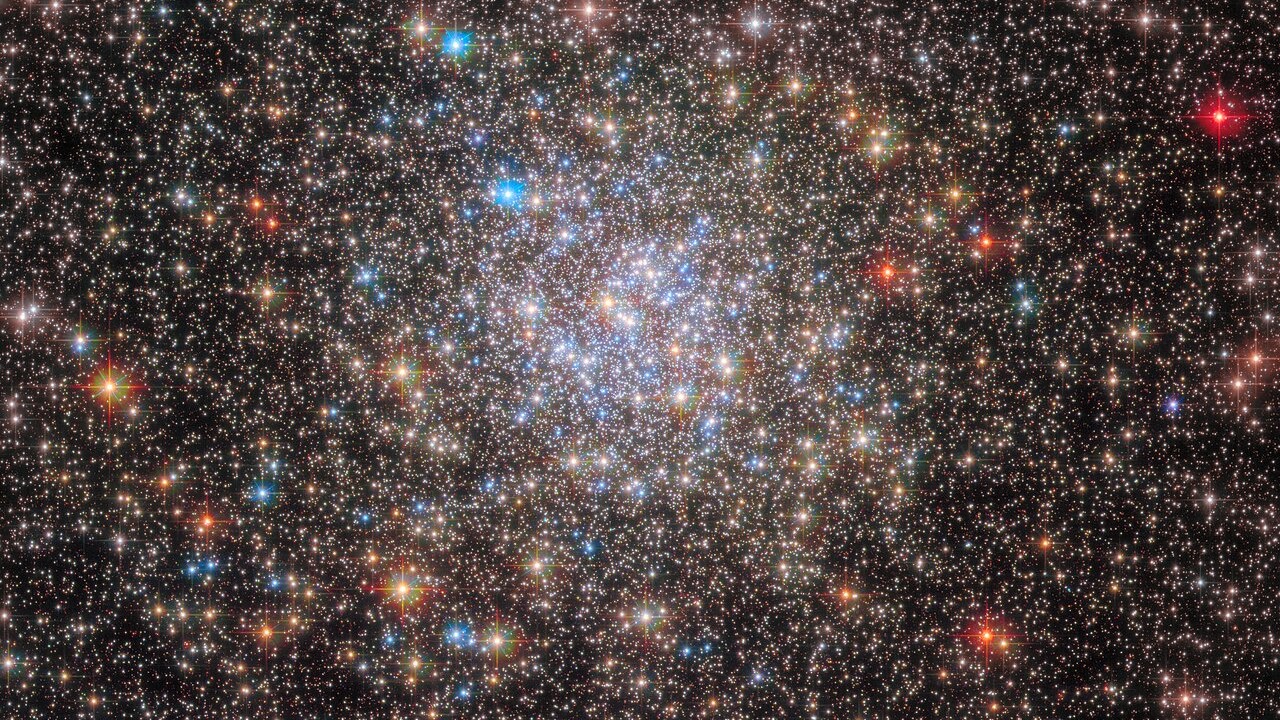Hubble Space Telescope captures chaotic globular cluster near Milky Way's core
The globular cluster NGC 6355 is located in the inner region of the Milky Way 31,000 light-years from Earth.
A stunning Hubble Space Telescope image shows the chaotic and densely packed stars of the globular cluster NGC 6355.
The globular cluster is located around 31,000 light-years from Earth in the inner region of the Milky Way — so deep into our galaxy that it is just 4,600 light-years from our galaxy's central supermassive black hole, Sagittarius A*.
Globular clusters like this one are home to tens of thousands to millions of stars, all tightly bound by mutual gravitational attraction. These dense stellar populations give globular clusters a roughly spherical shape.
Related: Mysterious globular clusters could unlock the secrets of galaxy formation

Globular clusters are found in galaxies of all shapes and sizes and tend to be the oldest structures in their home galaxies. They are packed with older and redder stars than those found in open star clusters, which are smaller than globular clusters.
This image of NGC 6355, which used data from the Hubble Space Telescope's Advanced Camera for Surveys and Wide Field Camera 3, captures the stunning details of a dense and bright heart of stars packed in the center of the globular cluster, according to the European Space Agency (ESA), a partner on the mission. The sparser scattering of stars on the outskirts of the globular cluster are also seen in crystal clarity.
The central red and blue stars of NGC 6355 can be distinguished clearly in the image, demonstrating the tremendous observational power of Hubble, which has revolutionized the study of globular clusters. Hubble is capable of capturing these amazing views because it is positioned around 330 miles (530 kilometers) above our planet's surface. This vantage point frees the telescope from the distorting effects of Earth's atmosphere that make it almost impossible for ground-based telescopes to distinguish the individual stars in globular clusters.
Get the Space.com Newsletter
Breaking space news, the latest updates on rocket launches, skywatching events and more!
Hubble observations have led to a wealth of information about globular clusters.
In 2006, the telescope made the first direct observations of white dwarfs — faint stellar remnants that form when stars with masses similar to the sun's run out of fuel for nuclear fusion and undergo gravitational collapse — in globular star clusters. These observations gave astronomers a better understanding of the ages and origins of stars in globular clusters and the evolution of those clusters.
In 2021, Hubble observations allowed astronomers to make the first measurement of black holes in the core-collapsed globular cluster NGC 6397. They were expecting to find an intermediate-mass black hole at the heart of this globular cluster, but instead, they discovered a concentration of smaller black holes throughout NGC 6397, which is located around 7,800 light-years from Earth.
Hubble also has produced images of Messier 15, which, at about 12 billion years old, is the most ancient known globular cluster.
You can see more Hubble images of globular clusters on ESA's website.
Follow us on Twitter @Spacedotcom or on Facebook.
Join our Space Forums to keep talking space on the latest missions, night sky and more! And if you have a news tip, correction or comment, let us know at: community@space.com.

Robert Lea is a science journalist in the U.K. whose articles have been published in Physics World, New Scientist, Astronomy Magazine, All About Space, Newsweek and ZME Science. He also writes about science communication for Elsevier and the European Journal of Physics. Rob holds a bachelor of science degree in physics and astronomy from the U.K.’s Open University. Follow him on Twitter @sciencef1rst.








